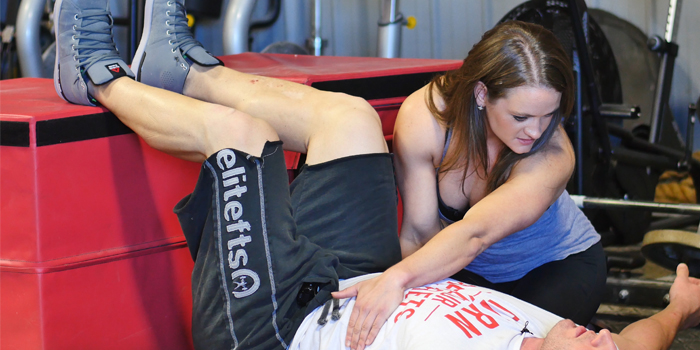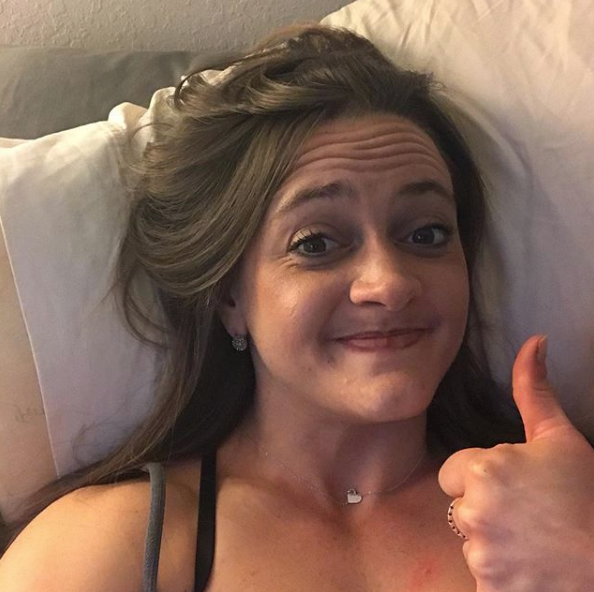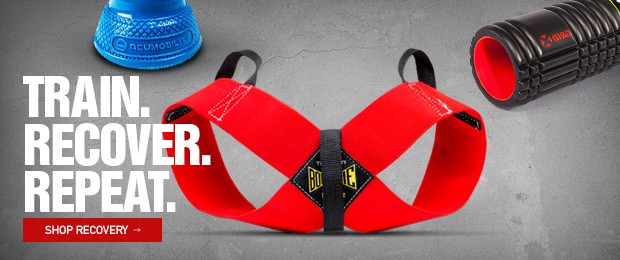
Injury sucks, period. But we learn through the stories of others. I hope that sharing how I handle this process with professional knowledge helps teach you how to ensure you get the best outcomes, how you should be thinking about rehab, and generally how to navigate injury. We as lifters often come into medical appointments with the biased belief that our doctor probably won’t understand what we do — and often times, that’s correct. I experienced that firsthand, and had I not had the educational background that I do, I’d be far worse for the wear at this point, which is why I believe sharing the thought process can be helpful.
I encouraged lifters in my last article to seek another opinion if they feel like they aren’t getting the information and care that they need initially, and that is the second best piece of advice I can give (the first being to control and choose your thoughts and the people you surround yourself with). Quite frankly, I was pretty dissatisfied with information (or lack thereof) that I was getting. No one had actually explained to me where tissue was going to “scar down” or what was happening. “Let's wait and see if things reattach themselves” was my best answer. My colleagues, who are all brilliant, were puzzled what physicians meant or expected, and the ambiguity drove me nuts. The injury I have is relatively rare, so studies done are few. And most have been done on NFL players (with a very small sample size) that have different demands to meet and who don’t want to have a pelvis intact when they have kids in a few years. None of the doctors I saw seemed to acknowledge the difference in demand and biomechanics of a one-rep max squat and a sprint, or actually looked at my MRI (only the initial typed report), which was hastily transcribed literally as I showed up for my first follow-up visit.
RECENT: The Acute Phase of Injury: What Just Happened?
I won’t compromise the long-term just for the sake of feeling more comfortable short-term, so I broke the mold a bit by seeing a non-hip specialist. There is a doctor near me that I have a pretty good relationship with and refer a lot of my patients to when their “top-ranked” surgeon doesn’t have the answer. He has taken his knowledge of histology and tissue healing far beyond the expected scope, and practices primarily non-surgical regenerative medicine and tissue healing. This was exactly the info I was looking for, given that my major question was, “Can someone just tell me what tissue I need to treat?” I needed answers, I needed to know I wasn’t going crazy for wanting to know where things were scarring down, and I needed to know what to expect based on the injury itself. Previous appointments left a massive ambiguity that I needed to understand so I could manage my own expectations going forward. I counted on this doctor to be able to tell me on a cellular, tissue-based level what I could do to ensure I’m back performing in my sport, not throwing a journal article at me that was relatively unrelated to sport demand (and ignoring the fact that I don’t have eight hours a day to sit in a whirlpool tub).
It was the best decision I could have made. I brought in my MRI, and while this doctor was not a specialist in radiology, he caught a few important things the initial read didn’t. Those things drastically changed the plan of care. In order to make sure he was seeing the correct tissue changes, he sent it over to the head of musculoskeletal radiology at one of our local hospital systems. My prognosis and plan changed drastically. It means playing conservative in the short-term for better long-term outcomes.
The Initial Plan
Initially, I was told to start working on some mobility after letting things scar down for the first two weeks. At that point, I was supposed to go within reason and to tolerance. This was basically a green light. I’d done a little research and saw in one of the three to four studies that players were jogging slowly, with improving mobility relatively quickly by the sixth week. This plan was based on a number of things, and these are things you should consider when determining your plan:
The Tissue Treated: This would have been comparable to a small avulsion fracture, meaning a bone-related injury. Bone pain can last for a while but also heals (functionally) faster than soft tissue like muscle or tendon, depending on the demand of the muscle or tendon. Six to eight weeks is a good general guideline, depending on the nature and demand, knowing that appropriate increasing stimulus aids in healing.
Inaccurate Acknowledgement for Strength Demands on Both Active and Passive Structures: One doctor told me I’d be squatting, possibly even loaded with a bar, at four to six weeks. This assumes integrity of both passive and active structures has not been compromised, meaning tissue stress is appropriately distributed and supported, provided movement patterns are relatively clean. At a certain point in the healing process, tissue requires and needs some stress to continue to remodel appropriately to promote long-term mobility and strength. Even with that knowledge, this seemed relatively fast to me, given that by week two I still couldn’t bear weight well or lie with my leg straight unsupported.
WATCH: Fixing Dave Tate — Adjustments to Lower Body Training Days for Phase 3
I doubted this assessment like crazy, but I had been given the green light. I told myself to be a good patient for once and not second-guess what the doctor said. Everything about what I was doing felt wrong in my gut, but I didn’t want to be “that PT” that annoys her physician. Not smart, in hindsight. My colleagues know me on a personal level and know that I’ll take every inch of freedom I’m given. They were skeptical, and encouraged me to reach out to the doctor I ended up working with.
The Current Plan
I got a call the Monday morning after seeing this doctor, who confirmed what he saw on the MRI from the head radiologist. “Dani, if you don’t let this heal right, you’re done lifting.” This is not your average “doesn’t understand the weight room” doctor who tells you find a new hobby. He’s known for getting people back to sport faster and better than almost any other. He understands my competing. He knows he is asking a lot of me when he tells me to take time off. He’s educated about the actual healing process, on a chemical and hormonal level, and histology in far more detail than any other physician I’ve met with for myself or for other patients. Those are some of the most important factors in your healing and return to training, and cannot be left unaddressed or unacknowledged.
Several things changed:
- Adductor tendon tissue integrity was initially read as “intact.” It was not. Not only was it torn, but had become relatively fibrotic prior to that, losing some of its elasticity. Loss of elasticity means loss of strength to failure. Seen firsthand and likely a contributing factor, this is something my rehab needs to address.
- Distance of avulsion was roughly twice what was initially read.
- Potential for bony fragment to re-tear through scar tissue is high. This would become a chronic issue.
- Potential for tendon to re-tear tissue or tendon is high.
- There was an ongoing partial issue — right hip labral pathology, meaning passive structures not 100%. This is where layers of chronic injury come in. The labral pathology isn’t reason to have pain; all it tells me is that there may be a change, proprioceptively. On it’s own, this is not a big deal. Here, it potentially may or may not add another layer to consider.
What This Means for the Big Picture
Generally, tissue should have a period of time that it’s permitted to generate, proliferate, and heal. You get one really great shot at this, either post-acute trauma or post-operation. It is an incredibly important healing stage. Gradually, that tissue is given stimulus to more closely mimic the direction of the “natural” stress, in parallel, or close to it rather than in a number of directions to improve overall tensile strength and stability. This is why training can be rehab, and why methods such as the Starr rehab protocol were used so effectively. However, that protocol was designed for muscle tears. When you’re looking at different tissues, they have different healing times based on the cellular processes and tissue vascularity. Beyond that type of tissue, it’s necessary to look at the quality of tissue. With tendons, vascularity is poor. Healing for a tendon that is fibrotic is generally delayed relative to one that has maintained most of its “original” properties, for lack of better word, and shows a decrease in tensile strength
The major risks include failure of the bone fragment to unionize, causing long-term mobility deficits, a torn and fibrotic tendon scarring down into scar tissue that lacks tensile strength of original tissue, and a fibrotic tendon left unhealed with significantly decreased maximum load to failure. Had I gone straight to movements at the speed initially told, the whole area generally lacks the elastic properties necessary to protect scar tissue, with relatively poor blood flow to certain structures (meaning decreased overall nutrition) or tendon. Less “stretchy” tendon pulling on not fully developed tissue is a recipe for tissue failure.
We came up with a plan of care that was far more conservative than initially thought. I’m doing some things I hadn’t heard of and will document them going forward. Moreover, I came into this injury with significant fatigue, not just from the previous weeks but also from poor recovery, poor sleep (tracked on average fewer than 5.5 hours per night for six months), and high stress for the last six to eight months. I’d had a previous wrist injury that was still giving me problems, and overall I felt like my body needed to, for lack of better word, recover. I reached out to Casey, knowing that when we’d worked to get his hamstring feeling better Dave told him to take a full six weeks off and not do anything. When he told me it was the best thing he ever did, I took it to heart. In my gut, as well as in my professional knowledge and the experience I have working with the team here, three out of three on my list of “should I just take this time to completely chill” answered with a “yes.” Obviously, I miss training, but I also have come to the standpoint that I’m unwilling to do anything that will compromise my ability to train long-term. More than that, I’m willing to do anything to keep it, even if it makes me feel like I’m crawling out of my skin for the short-term.
While I don’t have any of the “active” rehab started yet, this phase is incredibly important for long-term success, and I want you to hear that during your first phases of healing its okay to not do anything. Really. Anyone judging you for that is their own breed of special. The active rehab is coming, and likely will be far more interesting than the current situation. But, I do feel there’s a major gap in communication regarding how you, as lifters, move forward to make sure you’re actually going to be able to be in it for the long haul.
Here are the major takeaways at this point:
- Be thorough and satisfied with your care and answer. I have so much gratitude for the doctor I’m working with now, but I had to think outside of the “hip specialist” box to get there. He told me what I didn’t want to hear short-term, but likely saved my long-term.
- Do your homework. Know what you’re looking at. I don’t mean to troll PubMed or NCBI without context, but I think most people can look up some pertinent information regarding what tissue you actually need to heal and how long it can take rather than just taking someone’s word for it. It needs to make sense.
- Find a resource you trust. I—like most other physical therapists—am always here to help navigate this process. At the end of the day, a doctor can give you a diagnosis, but you need to have digested some of that information and know where it’s going. Sometimes peeling through what research is pertinent, what isn’t, and the basics of “histology” can be the best pieces of information to have.
- Know your goals. My goal, initially, was to do anything and everything I could to rehab well and somehow “prove” I’m a good enough PT to come back and compete in the Tribute meet in what would likely defy the physiological timeline. I’m scared of phasing out as a top-tier lifter, and made my goal under the guise of needing to “prove” I can still play with the big kids. Dumb, considering most of this is physiologically and scientifically-driven (and has zero to do with motivation at this moment). If the initial diagnosis had been on par, my goal may have been a possibility. My goal secondary to that was to make sure I don’t jeopardize my long-term training for the sake of short-term gains. I can’t have both right now, at least not unless things dramatically improve — which I wouldn’t be adverse to.
Image credit: Nonwarit Pruetisirirot © 123rf.com












